 |
||
| Model Review Index | ||
| Please note : There are lots of large pictures on this page which may take some time to download. 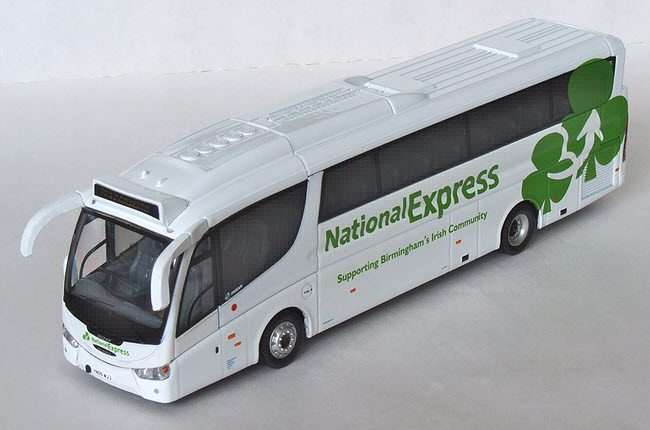 |
| Corgi announced three new coach castings in it's 2007 Catalogue, the first pair of Plaxton coaches, a Panther & Paragon, appeared during May 2007 but due to production problems the third new model was delayed by almost year and only hit the shelves in closing days of July 2008. The Real Coach The PB coach range was launched by Spanish based Irizar in 2001, the design was produced in close partnership with Scania who provide the running units for the majority of the vehicles. The PB bodywork has also been fitted on chassis manufactured by MAN, Iveco & Volvo and is available in a number of length variations, ranging from 12 to a 15 metre tri-axle version. The majority of the UK versions have been based on the Scania K114EB chassis and since 2002 the vehicle has gained favour with a growing number of coach operators who have been attracted by it's excellent specifications and striking appearance. 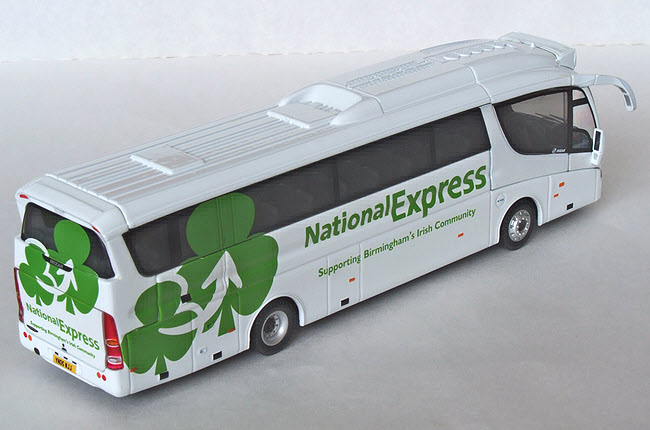 The Model The first pair of releases both depict National Express coaches, one in the standard NXL Shuttle livery and this version in a green and white “Irish” livery. The wait for this new casting has been somewhat longer than expected but I'm glad to say it appears the delay has been well worthwhile as the overall look of the model captures the vehicles distinctive lines brilliantly. The all important front profile has been particularly well modeled and has a high level of detailing, etched windscreen wipers are fitted and the large rabbit ear mirrors are supplemented by a smaller off-side driving mirror, all have silvered areas applied to their reverse sides to represent the actual mirrored glass.  This particular model has a roof mounted destination display while the NXL Shuttle version has its destination display position behind the windscreen. The version reviewed has a tiny destination display reading "Happy St Patrick's Day from all at National Express", an alternative version of the model with a more standard "420 London" destination was also produced. 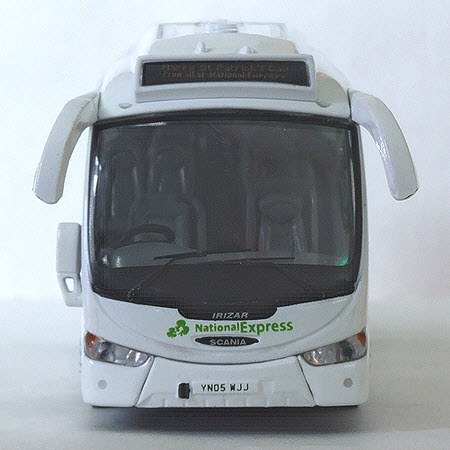 The headlights are clear plastic inserts that have the combined indicator lenses picked out in orange. The lower side lights on the front bumper are only represented by silver paint that is applied to a slight recess in the casting, compared to the real vehicle these could have done with being more deeply recessed. The cast metal roof features a detailed air conditioning unit that extends over the front half of the roof, the rear half has cast panel ribbing and two emergency exit hatches. The aforementioned destination display is a plastic component that fits very neatly onto the bulbous front end of the air-con unit  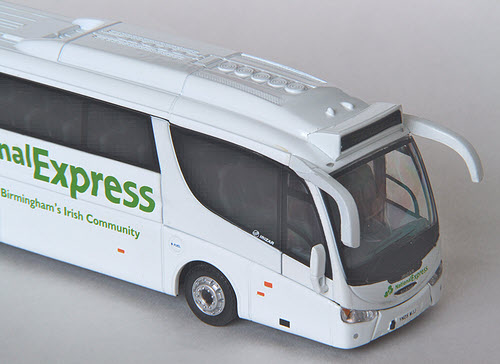 The sides have flush glazing and as with previous OOC coach models the glazing bars are represented using black tampo printing, the large curved feature windows towards the front are also produced in this way with the bottom edge of the plastic glazing component being over painted in the white body colour to produce the correct shape, this process has also been used below the front windscreen. 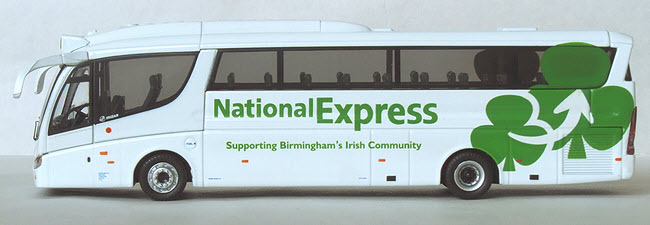 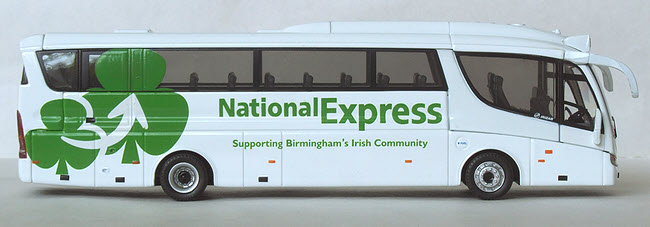 Side marking lights, indicators and luggage locker access handles are all tampo printed onto raised areas of the casting, a detail which enhances their appearance greatly. A large engine air intake grille is also nicely cast into the near side lower rear panels. The glazing detail is also notable in terms of the tinting which is present on all but the windscreen and forward most side windows which are in fact a separate glazing component. The joint between the two pieces of glazing is extremely well executed, you really can't distinguish the joint! 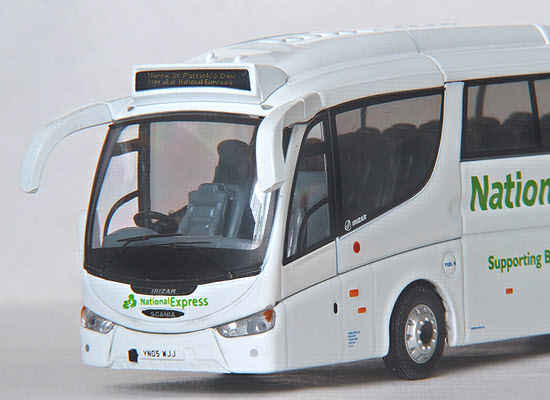 Moving on to the rear, large plastic inserts have been neatly used to represent the dominant rear light clusters, the separate indicators & reversing lights are realistically incorporated into the single piece mouldings. The rear engine cover is a separate plastic component that I presume is glued into place to hide the models fixing system. From a choppers point of view it should be noted that there are no visible fixing points on the fairly detailed metal baseplate, the model is also devoid of any internal fixing poles which suggests this could be a tricky model to disassemble. 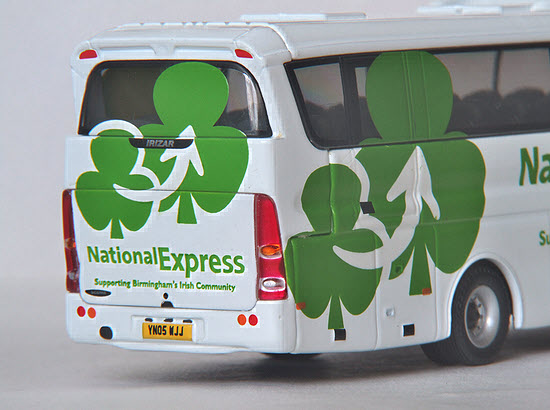   The internal detailing consists of a single light grey plastic moulding which incorporates the dashboard and all the seats, although this might sound a bit bland its not really a big problem as the tinted glazing does a good of obscuring interior features.  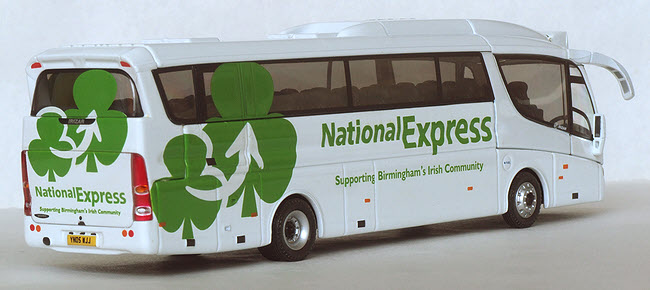 The wheels have silver plastic hubs with black painted centers, standard OOC soft plastic tires are fitted and as with the recent Plaxton coach castings the front wheels are fixed suggesting the once popular poseable steering feature may have dropped by Corgi on OOC models at least. The general paint finish is extremely good, the main white base is evenly applied and thin enough not to obscure any of the finer cast details. All the tampo printed details have been crisply & accurately applied right down to the tiny legal lettering and vehicle's unladen weight. Despite the very minor niggles mentioned above, this if anything actually surpasses the excellent Plaxton Panther & Paragon models. This new model is without doubt one of the best OOCs released to date and if this standard continues under the stewardship of Corgi's new owner Hornby we can certainly look forward to some high quality future OOC models. 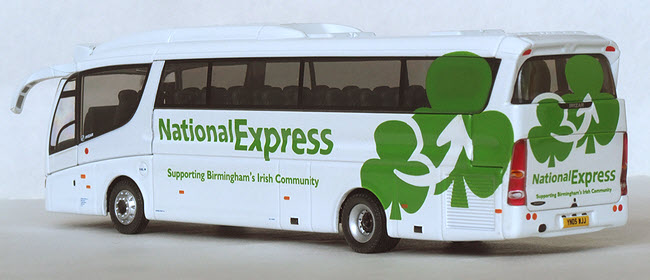 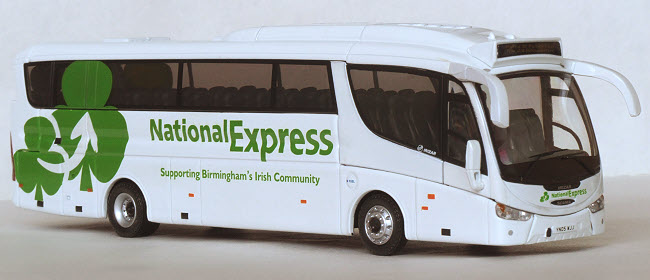  |
| Model Review Index |